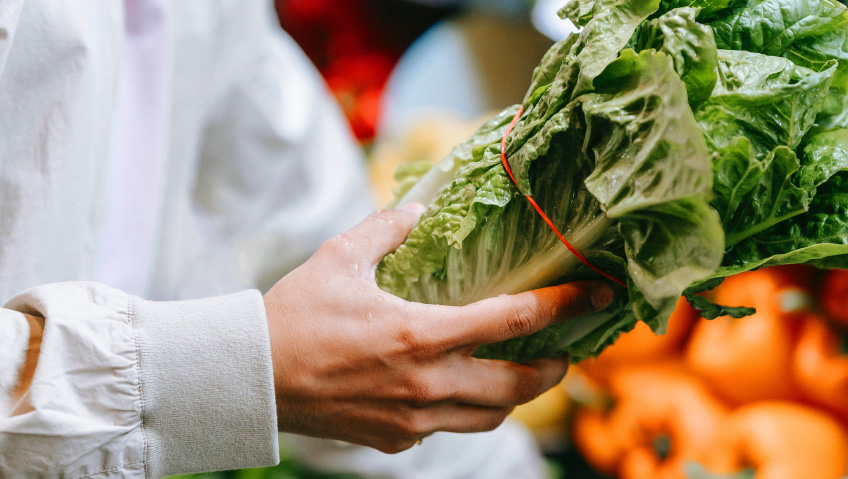The Canadian organic industry represents over 7,900 producers of a number of commodities including food and beverages, livestock and livestock feed, fibre, and many others. In 2022, the industry grew to $9.35 billion, with the non-food sector growing at a faster rate than food and beverage, although the latter represents 80 percent of the total market. Yet despite the sector’s great promise and strong growth year over year, myriad barriers are preventing the organic market from reaching its full potential, and the Canada Organic Trade Association (COTA) is at the forefront of efforts to make Canada a leader in organic.
COTA is the membership-based association for organic agriculture and products in Canada and represents the entire organic supply chain: growers, processors, distributors, consultants, and retailers. The organization focuses on improved market access, data and research, government relations, and regulatory affairs to expand awareness about organic and its many benefits.
“Organic is 3.3 percent of market share in Canada, but we are the fifth largest organic market in the world,” says Tia Loftsgard, Executive Director of COTA, of the Canadian organic sector. “We are very much an import nation for organic with much of our organic production in Canada being exported, therefore we play a major role on the world market for raw commodities. But the opportunity that we have that COVID exposed is that we should be sourcing and producing as much locally as we can.”
Why organic?
Most people are familiar with the word organic, but not with the effort that goes into ensuring that certification is achieved and upheld. Organic is the only federally regulated sustainability assurance system that encompasses the entirety of the production system: from field to purchase.
The United Nations Food and Agriculture Association (FAO) defines organic agriculture as “a holistic production management system which promotes and enhances agroecosystem health, including biodiversity, biological cycles, and soil biological activity. It emphasizes the use of management practices in preference to the use of off-farm inputs, considering that regional conditions require locally adapted systems.”
This is accomplished using sustainable cultural, biological, and mechanical methods instead of synthetic pesticides and agrochemicals, the overuse of which has caused soil and water contamination and a loss of biodiversity. The health of people and the environment are prioritized throughout.
As Loftsgard notes, “The organic sector cares about everything, not just about the production methods. They also care about having more sustainable packaging and reducing plastic in the world. We respond to what the market needs.”
Organic is a consumer-led initiative that allows consumers to use their purchasing power to put their values to work: supporting equitable employment practices and sustainable and holistic environmental practices, and at the same time satisfying their desire for more nutritious, fresh, quality products.
Loftsgard lists the four principles on which organic production is founded: “The principles of organic are health, fairness, care, and ecology. You can see many elements that tie into addressing rising food insecurity.” It begins with rethinking how food is grown.
“Organic requires a lot of training and education,” she says. “It does take a leap of faith to get the education and training to move in a new farming direction,” but its positive outcomes cannot be overlooked.
Mass agricultural production has contributed to land degradation, which is a direct threat to food and water security, which in turn becomes a source of conflict and migration, and that’s not the best way to meet the needs of an increasingly food-insecure population around the world.
Land degradation negatively impacts over 3.2 million people around the world. According to the FAO, agriculture is the largest employer in the world, but those who do 80 percent of the agricultural work also represent the majority of the global poor. By 2050, two billion people are expected to be malnourished unless significant changes to the global food and agriculture system are made.
The focus not only needs to be on how to grow more food, but also on how to preserve the environment, and ensure that food is grown to have optimal nutritional value, freshness, and quality.
Some of the jurisdictions that have established organic transition programs most successfully offer funding and support for farmers who are working to become certified organic, as it takes three years to make the transition, a costly process that includes bringing the soil ecology and health up to the standard that is the foundation of organic agriculture.
“We place a great emphasis on healthy soil, with, every season, recycling organic materials back into the soil and in some cases utilizing new no-till methods that will allow the root and the fungi system to develop naturally without interference,” explains Loftsgard.
This calls for a lot of time and money, but it’s worth it as organic agricultural principles promote more resilient lands that withstand the impacts of climate and pests without the need for synthetic pesticides or fertilizer and reduce the need for irrigation, which saves money, reduces water use, and improves biodiversity and health outcomes for people, the environment, and the economy.
Overcoming barriers
The full advantages and market potential of the organic sector in Canada have yet to be fully realized and that won’t be until some changes are made, including greater government involvement and support in the form of stronger policies, infrastructure, and financial backing.
The Federal Government introduced national organic regulations in 2009 and continues to promote sustainability, but the country still lacks the necessary infrastructure and resources that are required to advance the sector.
As Loftsgard says, “The Canada Organic Regime is federally regulated. It is law. The logo and the word organic are owned by the Canada Food Inspection Agency, yet they do little promotion or education about what it is. They leave that to the industry.”
Government infrastructure by way of a Canada Organic Program would offer a growth strategy and plan for the organic sector to increase organic acreage, and increase investment and funding for the sector, thus creating mechanisms to enforce and review standards while strengthening the organic brand. It would also assist in improving data collection to better differentiate organic from conventional to help maximize the sector’s capacity.
Similarly, as organic systems are likely to be part of local or regional food systems, whereby reliance on fuel-intensive transportation is greatly diminished, the government could also play a more active role in facilitating market/buyer interactions and developing processing and distribution capacity to strengthen local markets and support more sustainable food systems across the country.
However, when it comes to sustainability, the government, with its most recent funding program, has overlooked the organic producers who have been actively contributing to sustainability using holistic approaches for some time.
“The Federal Government has introduced an On-Farm Climate Action Fund where they are encouraging non-organic to move toward more sustainable practices, yet organic farmers have been doing it on their own for many years without any support,” says Loftsgard, who hopes that there will be an opportunity for organic as part of Agriculture Canada’s Sustainable Agriculture Strategy.
“It’s great to see that finally, the government is starting to think about how they can have encouraging policies and programs, but it’s yet to be seen how organic will position in that once the consultations are done and they’ve put the whole strategy in place.”
Interestingly, part of the government’s overall strategy includes the deregulation of genetically modified organisms (GMOs) and some new genetic engineering technology, which Loftsgard cites as “an imminent threat.” As such, COTA is working to ensure that the government understands the implications of this decision and will find solutions that will not be disadvantageous to the organic sector.
A collective future
Through its work, COTA endeavours to recognize organic and its many advantages on a greater scale. In partnership with other organizations, COTA will be making a formal submission for the next federal budget to hopefully gain support for an Organic Action Plan that will advance the sector as it matures, using the success of other jurisdictions as a framework for growth.
On the international stage, Denmark has a 90 percent acceptance rate for organic, and closer to home, Quebec has set its own Organic Action Plan with clearly established land conversion goals, programs, and support mechanisms like a transition program, infrastructure and resources, and a strong consumer education program, which could be adapted for use at the national level.
What is clear is that organic can help the Canadian Government achieve its sustainability goals while fighting against food insecurity and environmental degradation and there are countless strategies that can effectively meet those ends.
Whether it is funding for farmers, stronger policies, better crop insurance that reflects the full range and value of organic crops at a premium, a transition program, an organic plan, or increased education and awareness, COTA will continue to advance the cause of its members.
In this way, COTA will mitigate some of the risk shouldered by organic producers who are working to ensure that consumers enjoy organic products and their many benefits.






